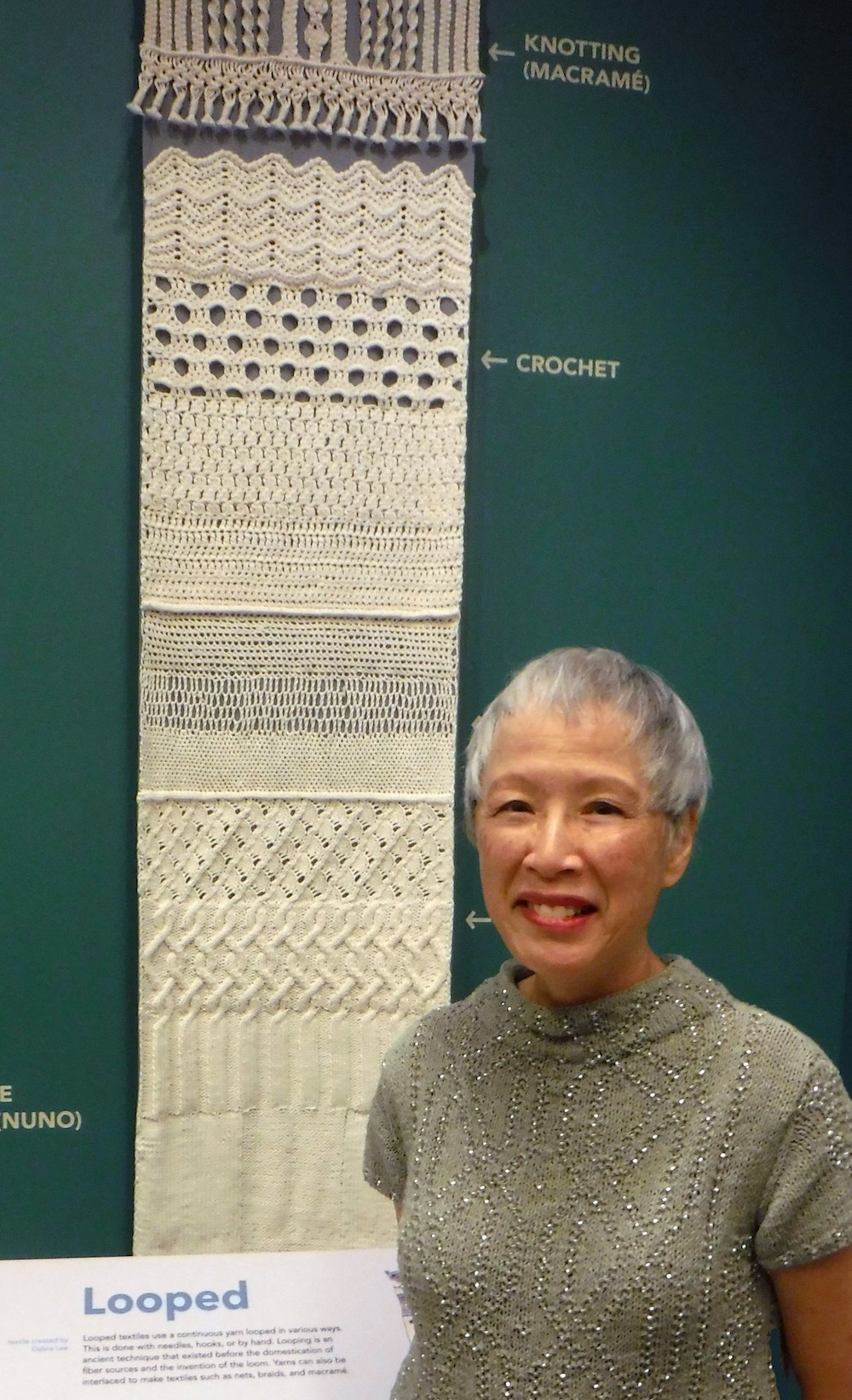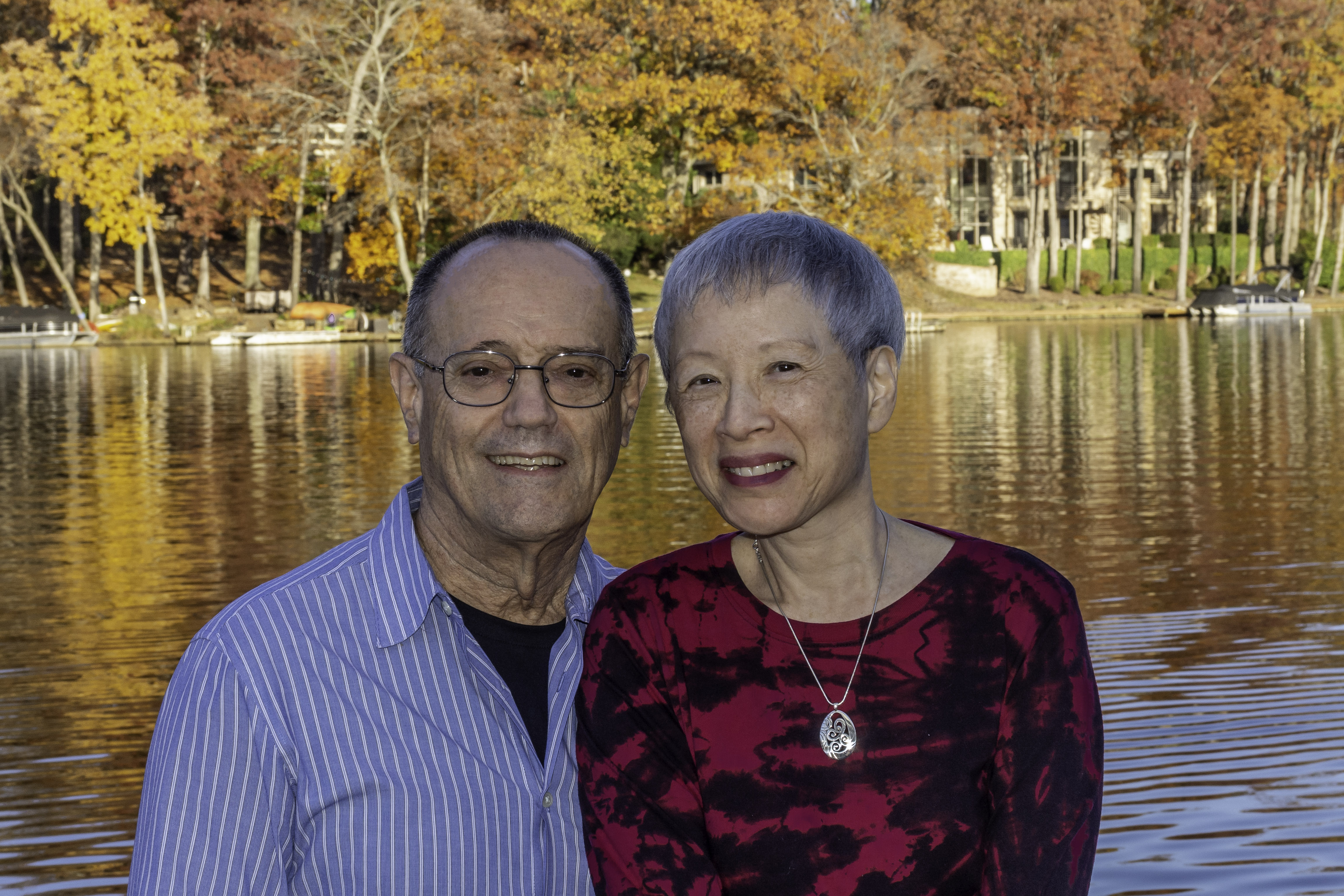By Ann McMaster
At the end of her hectic days designing and implementing business systems with clients, Debra Lee, M.B.A. ’83, for decades knitted for two hours almost every evening. The rhythm and feel of yarn transforming to fabric in her capable hands relaxed and freed her mind, creating not only colorful works of art but a mental state conducive to pondering—and solving—problems from her busy workdays.
As part of their estate plans, she and her husband recently established an endowed fund for The George Washington University Museum and The Textile Museum to foster innovation and connections in the fiber arts community.
 After early retirement in 2002, the native Washingtonian’s avocation evolved into a second career as a fiber artist. Ms. Lee, who taught herself macramé and crochet before her mother-in-law introduced her to knitting, actively immersed herself in the local fiber art community. She soon established a strong reputation for artistic talent, leadership in community engagement and as an educator, teaching knitting and design classes and workshops for years, exhibiting her contemporary art and one-of-a-kind wearables, and organizing events to build connections among textile art makers.
After early retirement in 2002, the native Washingtonian’s avocation evolved into a second career as a fiber artist. Ms. Lee, who taught herself macramé and crochet before her mother-in-law introduced her to knitting, actively immersed herself in the local fiber art community. She soon established a strong reputation for artistic talent, leadership in community engagement and as an educator, teaching knitting and design classes and workshops for years, exhibiting her contemporary art and one-of-a-kind wearables, and organizing events to build connections among textile art makers.
Her knitwear designs have been published in hand-knitting magazines and books, and her hand-knitting patterns are available in various channels online.
The parallels between knitting and computer programming might not be readily apparent at first blush, but fiber art and coding both are heavily process-oriented and reliant on mathematics, said Ms. Lee.
“You are problem-solving as you watch your design grow in your hands,” she said. “When you create a garment, you are making a three-dimensional piece of art that also has to fit a person. There are a lot of tools and techniques to learn.”
She has long enjoyed pushing the boundaries of traditional fiber techniques but is now evolving to non-conventional applications that create art that educates and informs while invoking emotions or movement.
Over 25 years as an information technology professional, Ms. Lee traveled a tidal wave of change from mainframe computers to PCs, noting her GW education prepared her well to manage these technological and organizational transitions. Attending classes at night after her full-time job, she tailored her curriculum to her specific career path vision, selecting management science or organizational development courses as electives to complement her concentration in information systems technology.
Donna Arbide, vice president for development and alumni relations at GW, said the generous endowment from Ms. Lee and Mr. McLennan “creates a legacy of positive change that will elevate and expand the reach our museum into the future.”
“It is extremely gratifying when our alumni support our museum, which highlights textiles from five continents,” Ms. Arbide said. “These artworks capture 5,000 years of human creativity and offer our students and the public a portal for cross-cultural understanding.”
Since the museum opened at GW in 2015, alumni have begun joining as members and supporting its exhibitions and programs. In 2018, Ms. Lee contributed an eight-foot banner display demonstrating the structure of looped stitches, including knitting, crochet, simple looping and macramé to the interactive Textiles 101 gallery at the museum. Documentary film students from the Corcoran School of the Arts & Design produced a short video on the project.
Ms. Lee and her husband, George, hope their endowment will seed new projects and innovative new ways to connect the fiber art community and elevate the craft. “It takes courage to think out of the box,” said Ms. Lee. “And money to implement.”
Mr. McLennan’s professional background is also technical, focused on physics and engineering, but he enjoys photography as a creative outlet. His involvement in textile art, aside from the couple’s estate plans, is limited to wearing the many colorful vests his wife creates for him.
Creative outreach efforts by the museum already have begun growing campus connections to local, national and global audiences. During the pandemic, a pivot to virtual programming that included curator talks and artist interviews exponentially grew the museum’s global audience, noted Museum Director John Wetenhall. “Instead of the 40-50 people that might attend a local event in Foggy Bottom, our virtual events have drawn 200-500 people from 47 states and 50 countries,” Dr. Wetenhall said. “This future endowment will further the museum’s efforts to reach audiences with a focus on innovation and access.”
Ms. Lee is concerned that many do not understand the richness of textile, or fiber art, relating it to a grandmotherly pastime instead of its potential as fine art. “People tend to think of fiber art in terms of the material. But paint is also a material, you can use paint to color a wall or create a painting. It’s what you do with the materials, whether it is needles and yarn or paint and a brush,” Ms. Lee said. A small selection of the creative applications and possibilities of textile art is available on her website.
Contributions to the museum enable GW to showcase textile art, global cultures, and local history through exhibitions, programs, and publications.


